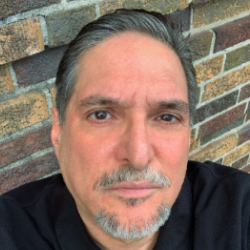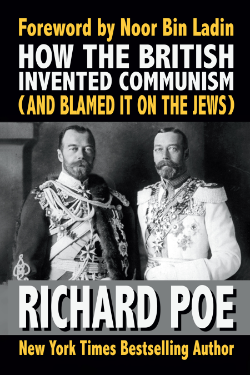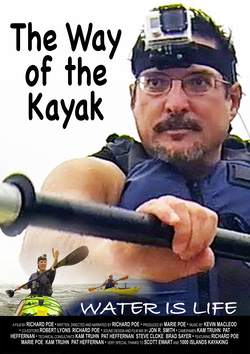When Japan Attacked the U.S. Mainland
|
by Richard Poe Monday, December 10, 2007 12:00 am Eastern Time |
Archives 2 Comments |
JAPANESE BOMBERS descended on Pearl Harbor 66 years ago, killing more than 2,400 Americans and demolishing our Pacific fleet. Every American knows the story. However, too few of us know that Japanese forces made additional attacks on U.S. soil after December 7, 1941. Pearl Harbor was merely the first. Our history books grow strangely tongue-tied on this subject. After 66 years, it is time to tell the full story.
Following his success at Pearl Harbor, Japanese Fleet Admiral Isoroku Yamamoto sought to press his advantage. He planned a two-pronged assault on America. His main force would invade Hawaii. A smaller force would create a diversion by attacking Alaska.
Alaska’s soft underbelly was the Aleutians, a chain of more than seventy islands stretching 1,100 miles to the southwest. The easternmost island, Attu, lies only 750 miles from Japan. After taking Attu, Yamamoto could island-hop his way to the Alaskan mainland.
For the attack on Alaska, Yamamoto sent his Fifth Fleet, including 2 light aircraft carriers, 13 destroyers, 5 cruisers, and 4 troop transports.
Two waves of Japanese bombers struck Dutch Harbor, Alaska on June 3 and 4, killing 33 U.S. servicemen and 10 civilians. After neutralizing this critical U.S. base on the island of Unalaska, Japanese troops siezed Attu and Kiska, and dug themselves in.
The attack on Hawaii did not fare as well. American cryptographers had cracked the Japanese naval code and knew Yamamoto’s plans. They knew he planned to capture Midway island to use as a staging base for his move on Hawaii.
While Yamamoto’s main force attacked Midway on June 4, the Americans lay ready for him. By the end of the day, they sank four Japanese aircraft carriers, crippling the Imperial Navy.
Japan’s offensive ground to a halt. Now the Americans counterrattacked.
The Japanese proved strong on defense. In the Aleutians, U.S. ground troops got their first taste of Japan’s warrior code, which favored death over defeat. Out of 2,650 Japanese troops defending Attu, only 28 lived to surrender. It took 14 months and 700 American lives to clear the invaders from the Aleutians.
Meanwhile, Japanese submarines prowled America’s Pacific coast, sinking ships and even firing on land-bound targets.
On the night of February 23, 1942, for instance, the submarine I-17, under Commander Nishino Kozo, surfaced near the Bankline Company Oil Refinery in Goleta, California — about 12 miles north of Santa Barbara — and opened fire with the sub’s deck gun, damaging an oil well.
Some Japanese submarines functioned as mini-aircraft carriers. They stored one or two light bombers in watertight hangars on deck, which they launched with explosive catapults. These Yokosuka E14Y floatplanes could carry two bombs or one torpedo. A 7.7-mm machine gun adorned the rear cockpit.
One such converted submarine, the I-25, terrorized America’s west coast for four months in 1942.
Its skipper Meiji Tagami bombarded a naval base at Fort Stevens, Oregon on June 22, 1942, firing 5.5-inch shells from the I-25’s deck gun.
Tagami’s most daring feat was launching the first air strike on the U.S. mainland. Planners in Tokyo hoped to start forest fires with incendiary bombs, which would spread down the coast destroying cities.
A young pilot named Nobuo Fujita would lead the historic raid.
The I-25 surfaced off the Oregon coast on September 9, 1942. Captain Tagami told Fujita, “You’re going to make history today, Nobuo. You’re going to show them who really owns the Pacific — the Empire of the Rising Sun!”
Fujita and his navigator-bombardier, Shoji Okuda, took off with two bombs and flew inland. “For miles there were nothing but great forests…” Fujita later wrote. He released the first bomb, watching it “explode with a brilliant white light…” The second burst like a “white blossom”.
“We had done it!” Fujita wrote. “We had bombed America!”
Fujita dropped two more bombs on Oregon forests the night of September 29. Pressed by U.S. aircraft and bad weather, the I-25 aborted its mission and headed out to sea on October 5.
Before the war ended, the Japanese started much worse fires with unmanned balloon bombs set adrift over U.S. forests. Yet Fujita’s mission stands unique in the annals of warfare.
Militarily ineffective, it nonetheless captures our imagination, embodying all that we hated and admired in our Japanese adversaries: their bluster, their arrogance, their disquieting tenacity, their selfless valor.
Sixty-six years ago, two peoples met in war, finding in each other worthy foes. May our peoples prove as stout in friendship as we did in enmity.








See reader comments at FreeRepublic.com:
Posted on 12/13/2007 5:18:58 PM PST
Found you article while telling my Japanese bride about the attack on Alaska while watching an interview of Gov. Palin. Great Article may I add. Wondering if you have visited the Kamikaze base in Chiran, on Kyushu, the Southern most Island of Japan.
As an American Combat Veteran, I was moved by the reverence the Japanese have for their fallen heroes. We Viet Nam vets did not experience this. I was glad to read how you fairly treated the Japanese in the article. There are many who only takes sides..you did not. Thank you.